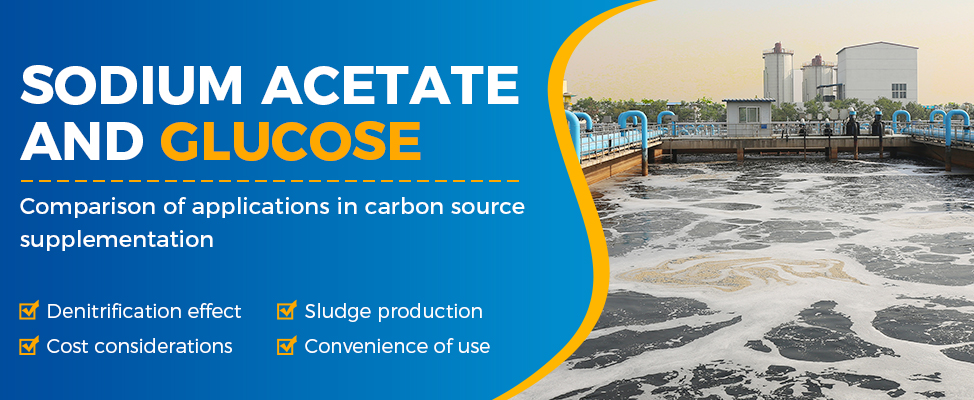
In wastewater treatment, especially in nitrogen and phosphorus removal, external carbon sources play a key role in supporting microbial activity. Sodium acetate and glucose are two commonly used carbon sources, but they differ in performance, cost, and application scenarios. This article provides an in-depth comparison to guide engineers and operators in choosing the most suitable option.
√ Rapid utilization: Quickly absorbed by microorganisms, ideal for short-process denitrification.
√ High denitrification efficiency: Provides an effective electron donor, improving nitrate and nitrite removal.
√ Applications: Municipal wastewater, textile effluents, petrochemical wastewater, pharmaceutical wastewater.
√ Slow release: Provides a steady energy supply for long-term microbial growth.
√ Improves BOD/COD ratio: Enhances microbial metabolism.
√ Applications: Food processing wastewater, slaughterhouse wastewater, dairy wastewater.
Municipal Wastewater
√ Sodium acetate: Improves nitrogen removal efficiency.
√ Glucose: Stabilizes microbial growth but less effective for rapid denitrification.
Industrial Wastewater
√ Sodium acetate: Effective in textile, papermaking, petrochemical industries.
√ Glucose: Suitable for food, dairy, slaughterhouse wastewater.
Economic Considerations
√ Sodium acetate: Moderate price, lower dosage, efficient.
√ Glucose: Lower price, higher dosage required, may increase sludge production.
√ Target: For efficient denitrification, choose sodium acetate.
√ Water quality: For nutrient-deficient wastewater, glucose may be better.
√ Cost: Consider both dosage and sludge handling cost.
Q1: Can sodium acetate and glucose be used together?
A: Yes, in some cases, combining both ensures quick response and long-term stability.
Q2: Is sodium acetate suitable for all wastewater types?
A: Not always. For low-nitrogen and high-organic wastewater, glucose can be more cost-effective.
Q3: Which carbon source is better for microbial diversity?
A: Glucose supports diverse microbial growth, while sodium acetate favors denitrifying bacteria.
Q4: What happens if carbon sources are overdosed?
A: Overdosing may cause sludge bulking, excess COD in effluent, and higher operating costs.
Q5: Are there alternatives to sodium acetate and glucose?
A: Yes, such as methanol, ethanol, and by-products like molasses, depending on process needs.
What key roles does glucose play in water treatment?
Application principle of sodium acetate in biological denitrification

Please contact us for free quotation by form below. We promise the quickest response within 24 hours: